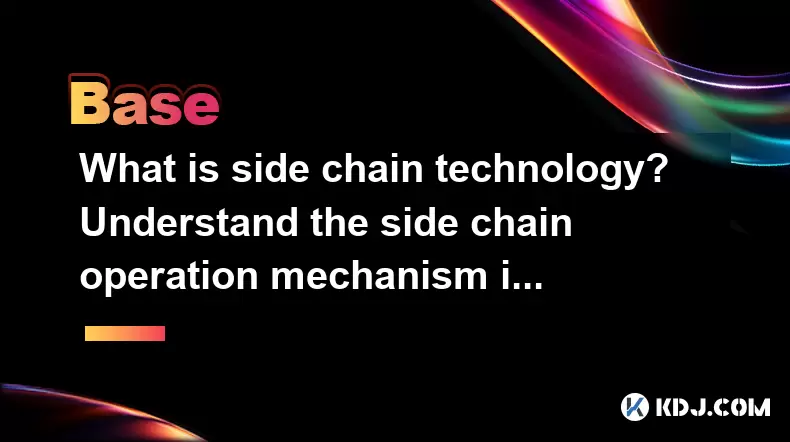-
 Bitcoin
Bitcoin $117500
2.04% -
 Ethereum
Ethereum $3759
3.02% -
 XRP
XRP $3.171
3.30% -
 Tether USDt
Tether USDt $1.000
0.03% -
 BNB
BNB $782.4
2.52% -
 Solana
Solana $187.2
5.62% -
 USDC
USDC $0.0000
0.02% -
 Dogecoin
Dogecoin $0.2380
5.26% -
 TRON
TRON $0.3175
1.07% -
 Cardano
Cardano $0.8227
4.03% -
 Hyperliquid
Hyperliquid $44.50
5.44% -
 Sui
Sui $4.020
10.07% -
 Stellar
Stellar $0.4396
6.28% -
 Chainlink
Chainlink $18.32
4.55% -
 Hedera
Hedera $0.2628
10.71% -
 Bitcoin Cash
Bitcoin Cash $554.8
4.90% -
 Avalanche
Avalanche $24.20
4.60% -
 Litecoin
Litecoin $113.7
2.31% -
 Shiba Inu
Shiba Inu $0.00001413
5.99% -
 UNUS SED LEO
UNUS SED LEO $8.984
0.11% -
 Toncoin
Toncoin $3.326
7.22% -
 Ethena USDe
Ethena USDe $1.001
0.00% -
 Uniswap
Uniswap $10.49
4.56% -
 Polkadot
Polkadot $4.092
4.02% -
 Monero
Monero $326.6
1.30% -
 Dai
Dai $1.000
-0.01% -
 Bitget Token
Bitget Token $4.570
2.49% -
 Pepe
Pepe $0.00001267
5.10% -
 Aave
Aave $297.3
3.10% -
 Cronos
Cronos $0.1344
4.10%
What is side chain technology? Understand the side chain operation mechanism in one article
Side chains enhance blockchain scalability by offloading transactions, allowing faster, cheaper operations while maintaining main chain security.
May 26, 2025 at 05:50 am

Side chain technology is a crucial concept within the cryptocurrency ecosystem, designed to enhance the functionality and scalability of blockchain networks. At its core, a side chain is a separate blockchain that is linked to a main blockchain, allowing for the transfer of assets between the two chains. This technology aims to solve some of the inherent limitations of traditional blockchains, such as slow transaction speeds and limited scalability.
What is a Side Chain?
A side chain is essentially an independent blockchain that runs parallel to the main blockchain, often referred to as the parent chain. The primary purpose of a side chain is to offload some of the main chain's workload, thereby improving its performance. By transferring assets to a side chain, users can perform transactions more quickly and at a lower cost, without compromising the security of the main chain.
How Does a Side Chain Work?
The operation of a side chain involves several key steps that ensure the secure transfer of assets between the main chain and the side chain. The process typically includes:
- Locking Assets on the Main Chain: To move assets to a side chain, users must first lock their assets on the main chain. This is done by sending the assets to a special address that holds them until they are ready to be transferred back.
- Transferring Assets to the Side Chain: Once the assets are locked, a corresponding amount of assets is created on the side chain. This process is facilitated by a two-way peg mechanism, which ensures that the value of the assets on the side chain is equivalent to the locked assets on the main chain.
- Performing Transactions on the Side Chain: Users can now use their assets on the side chain to perform transactions. These transactions are processed and validated by the side chain's network of nodes, independent of the main chain.
- Returning Assets to the Main Chain: When users want to move their assets back to the main chain, they must burn the assets on the side chain. This triggers the release of the locked assets on the main chain, allowing users to regain access to their original assets.
Benefits of Side Chain Technology
The implementation of side chain technology offers several significant benefits to the cryptocurrency ecosystem:
- Improved Scalability: By offloading transactions to side chains, the main chain can process more transactions per second, improving overall network scalability.
- Enhanced Privacy: Side chains can be designed to offer enhanced privacy features, allowing users to conduct transactions with greater anonymity.
- Flexibility and Customization: Developers can create side chains tailored to specific use cases, enabling the integration of new features and functionalities that may not be possible on the main chain.
- Interoperability: Side chains can facilitate the transfer of assets between different blockchain networks, promoting interoperability and expanding the utility of cryptocurrencies.
Examples of Side Chain Implementations
Several cryptocurrency projects have successfully implemented side chain technology to enhance their networks. Some notable examples include:
- Liquid Network: Developed by Blockstream, the Liquid Network is a side chain designed to facilitate faster and more secure Bitcoin transactions. It is primarily used by financial institutions and exchanges for settling large transactions.
- RSK: Rootstock (RSK) is a smart contract platform that operates as a side chain to the Bitcoin network. It enables the execution of smart contracts using Bitcoin as the native currency, thereby expanding the functionality of the Bitcoin ecosystem.
- Polkadot: While not a traditional side chain, Polkadot uses a similar concept called parachains to connect multiple blockchains into a single network. This allows for the seamless transfer of assets and data between different blockchains.
Security Considerations in Side Chain Technology
Ensuring the security of side chains is paramount, as they handle valuable assets transferred from the main chain. Several measures are in place to safeguard the integrity of side chain transactions:
- Two-Way Peg Mechanism: The two-way peg ensures that assets on the side chain are backed by an equivalent amount of assets locked on the main chain, preventing double-spending and ensuring the security of the transferred assets.
- Federated Pegs: Some side chains use a federated peg system, where a group of trusted entities, known as the federation, manages the transfer of assets between the main chain and the side chain. This adds an additional layer of security and oversight.
- Proof of Stake (PoS) and Proof of Authority (PoA): Many side chains employ consensus mechanisms like PoS or PoA, which are more energy-efficient and can offer higher security compared to traditional Proof of Work (PoW) systems.
Practical Applications of Side Chains
Side chain technology has found practical applications in various sectors within the cryptocurrency industry:
- Decentralized Finance (DeFi): Side chains can be used to create specialized DeFi platforms that offer unique features and improved performance compared to those built on the main chain.
- Gaming and NFTs: The gaming industry and non-fungible token (NFT) markets can benefit from side chains by enabling faster and more cost-effective transactions, enhancing the user experience.
- Cross-Chain Transactions: Side chains facilitate the transfer of assets between different blockchain networks, enabling seamless cross-chain transactions and expanding the utility of cryptocurrencies.
Frequently Asked Questions
Q: Can side chains operate independently of the main chain?
A: Yes, side chains can operate independently of the main chain once the assets are transferred. They have their own set of validators and consensus mechanisms, allowing them to process transactions and execute smart contracts without relying on the main chain's infrastructure.
Q: How do side chains affect the security of the main chain?
A: Side chains are designed to enhance the security of the main chain by offloading transactions and reducing congestion. However, the security of the side chain itself depends on its consensus mechanism and the integrity of the two-way peg system. If a side chain is compromised, the assets locked on the main chain remain secure, as they are not directly affected by the side chain's vulnerabilities.
Q: Are side chains only used for cryptocurrencies?
A: While side chains are most commonly associated with cryptocurrencies, their technology can be applied to any blockchain-based system. They can be used to improve the scalability and functionality of various blockchain applications, including supply chain management, identity verification, and data storage.
Q: How can developers create their own side chains?
A: Developers can create their own side chains by leveraging existing blockchain platforms that support side chain development, such as Ethereum's Plasma or Polkadot's parachain technology. They must define the side chain's consensus mechanism, set up the two-way peg system, and ensure that the side chain can securely interact with the main chain. This process requires a deep understanding of blockchain technology and may involve the use of specialized tools and frameworks.
Disclaimer:info@kdj.com
The information provided is not trading advice. kdj.com does not assume any responsibility for any investments made based on the information provided in this article. Cryptocurrencies are highly volatile and it is highly recommended that you invest with caution after thorough research!
If you believe that the content used on this website infringes your copyright, please contact us immediately (info@kdj.com) and we will delete it promptly.
- Bitcoin Mining Goes Mobile: Apps & Strategies for Earning in 2025
- 2025-07-27 00:50:12
- Altcoins Primed for a 2025 Takeover: Undervalued Cryptos to Watch
- 2025-07-27 00:50:12
- Blockchain, Stocks, and Gold: A New Era of Financial Integration
- 2025-07-27 00:30:12
- IOTA Price and the Compliance Drive: How Institutional Adoption is Shaping the Future
- 2025-07-27 00:30:12
- XRP Price Swings, Unilabs Listing Heats Up, and Utility Coins Take Center Stage: What's the Buzz?
- 2025-07-26 23:30:12
- Ethereum Meme Coins: Can Punisher Coin Deliver 55x Gains?
- 2025-07-26 22:50:12
Related knowledge

What is the difference between CeFi and DeFi?
Jul 22,2025 at 12:28am
Understanding CeFi and DeFiIn the world of cryptocurrency, CeFi (Centralized Finance) and DeFi (Decentralized Finance) represent two distinct financia...

How to qualify for potential crypto airdrops?
Jul 23,2025 at 06:49am
Understanding What Crypto Airdrops AreCrypto airdrops refer to the distribution of free tokens or coins to a large number of wallet addresses, often u...

What is a crypto "airdrop farmer"?
Jul 24,2025 at 10:22pm
Understanding the Role of a Crypto 'Airdrop Farmer'A crypto 'airdrop farmer' refers to an individual who actively participates in cryptocurrency airdr...

What is the difference between a sidechain and a Layer 2?
Jul 20,2025 at 11:35pm
Understanding the Concept of SidechainsA sidechain is a separate blockchain that runs parallel to the main blockchain, typically the mainnet of a cryp...

What is the Inter-Blockchain Communication Protocol (IBC)?
Jul 19,2025 at 10:43am
Understanding the Inter-Blockchain Communication Protocol (IBC)The Inter-Blockchain Communication Protocol (IBC) is a cross-chain communication protoc...

How does sharding improve scalability?
Jul 20,2025 at 01:21am
Understanding Sharding in BlockchainSharding is a database partitioning technique that is increasingly being adopted in blockchain technology to enhan...

What is the difference between CeFi and DeFi?
Jul 22,2025 at 12:28am
Understanding CeFi and DeFiIn the world of cryptocurrency, CeFi (Centralized Finance) and DeFi (Decentralized Finance) represent two distinct financia...

How to qualify for potential crypto airdrops?
Jul 23,2025 at 06:49am
Understanding What Crypto Airdrops AreCrypto airdrops refer to the distribution of free tokens or coins to a large number of wallet addresses, often u...

What is a crypto "airdrop farmer"?
Jul 24,2025 at 10:22pm
Understanding the Role of a Crypto 'Airdrop Farmer'A crypto 'airdrop farmer' refers to an individual who actively participates in cryptocurrency airdr...

What is the difference between a sidechain and a Layer 2?
Jul 20,2025 at 11:35pm
Understanding the Concept of SidechainsA sidechain is a separate blockchain that runs parallel to the main blockchain, typically the mainnet of a cryp...

What is the Inter-Blockchain Communication Protocol (IBC)?
Jul 19,2025 at 10:43am
Understanding the Inter-Blockchain Communication Protocol (IBC)The Inter-Blockchain Communication Protocol (IBC) is a cross-chain communication protoc...

How does sharding improve scalability?
Jul 20,2025 at 01:21am
Understanding Sharding in BlockchainSharding is a database partitioning technique that is increasingly being adopted in blockchain technology to enhan...
See all articles

























































































